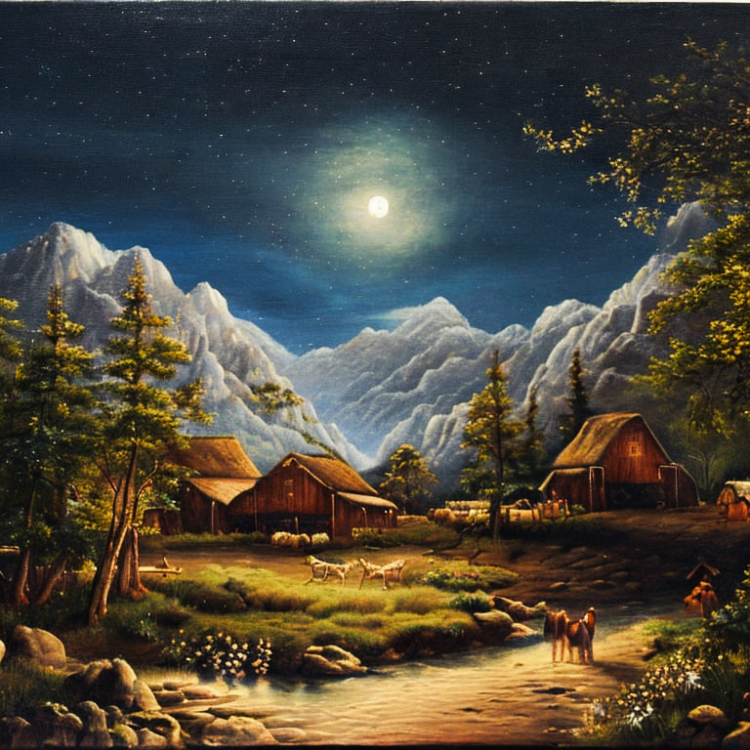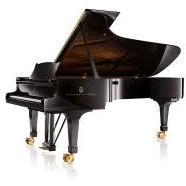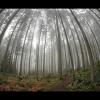Leaderboard
Popular Content
Showing content with the highest reputation on 12/15/2022 in all areas
-
Hello there. This is a solo guitar piece I recorded for a video that's being made. The details of it aren't final, but there will be dancing in the woods, and things to that effect. I have this tabbed out, so if there's any interest in seeing that I'll make it look pretty, but otherwise, I hope you enjoy! Oh yeah, it's about a girl 😄1 point
-
About time I upload something. Here's a little romanticism for you. Hope you all enjoy, and as always, any sort of comments are welcome. I'd especially like to hear your thoughts on enharmonics. Special thanks to PeterthePapercomPoser for your advice with this one.1 point
-
It took me a few months, but I finally completed my most recent work for orchestra. This piece is nominally in scherzo-trio form, with some slight modifications. Each scherzo is itself also binary in the manner of a sonata form exposition and recapitulation. The trio is actually a waltz, slowly built up from nothing via the gradual introduction of cliches. Though it seems to be unrelated to the scherzo at first, I bridge the gap with the transition back into the scherzo. The strict metric modulation to precisely half-tempo for the trio is critical. In the concluding fugato, both themes from the scherzo are combined simultaneously. Score video:1 point
-
I think a horn would sound too "nice". I liked the nasally effect of the low trumpet, plus the fact that I got to put the trumpet to a somewhat unusual use (at least for the style) there, all in keeping with the scherzo feel.1 point
-
Hi again, ladies and gentlemen! Hope you've been alright. Since there's been some activity increase (at least from my perception) and very interesting posts lately (like this, this and this...Ah and this) I decided to upload yet another piece. A piece per two weeks seems more or less alright to me. In this case I'm bringing here a kinda old work (March 2020) that, if you happened to listen to my 5th nocturne for piano solo, resembles it in its main motive. This piece is for woodwinds and piano and its sound has lots of room for improvement, but this is what I had at that time (and considering I'm using the very same software, probably the only things that have improved are my ears and the piano soundfont). As you may already know, I don't usually like to extend myself in unneeded descriptions so I'm leaving you the .pdf and the .mp3 here. ♫ MP3: (if you don't see anything, it's probably a bug. In that case check scroll down to the bottom of this message) ♫ PDF: 32 - Sollozos.pdf And that'd be all for now. Hope you find it decent and enjoyable enough. My recommendation would be listening to it with headphones (for this and every piece of mine) and as always, any kind of feedback, criticism, opinion, be it longer or shorter, is and will be always very welcome. Look at this image. It has nothing to do with anything but I wanted to put it here, hope you don't mind. Kind regards, Daniel–Ømicrón.1 point
-
2 nocturnes a week is really a "WOW" productivity. The first movement of my string sextet is still only completed two-third. How can I mishear and see it wrongly?? I've definitely listen to the piece and read the score several times, bur look like my misconception conceals the truth! Sorry for that!! I learn voice exchange only by writing chamber pieces. It definitely demands different writing technique than solo piano piece. Keep writing and there will be progress! If I have any chance to post my string quartet no.1 in C sharp minor here(which is composed by little Henry, LOL), you will find how horrible the score is if I don't polish it (really shameful on that). Actually the score of ( ) is also polished, otherwise you will see a bunch of ugly pedals and messy "flowers"! For sure looking forward to it! LOLOL. NONONONO!!WHYYYYYYY! Then it was really exhausting for you to listen to the clarinet sound in my quintet for 1 hour, LOL! Henry1 point
-
Hehe, I believed it was a neat way to share some posts I liked, and it turned out to be a nice bait 😎. Just to clarify I meant the rate of making posts. My production rate was slower, but last year it has been faster. Nocturnes 1-19 were composed in roughly the span of 3-4 months, with periods of 2 nocturnes per week. It is the lack of free time what slows me down the most I'd say. Oh true, I detuned the whole piece but don't know at which freq, probably A = 420 Hz or A = 405 Hz. I liked how it sounded and I forgot to mention this. Quite impressive that you found 3 parts in such small score. The harpsichord you mention should be a piano and sound like it though, but perhaps the soundfont used gives that vibe? Again sure but it's a piano lol. It was not my intention to make it sound like a harpsichord 😅 nor to sound baroque. Not that It wouldn't be cool, very likely it will but from what I remind this was not my aim (in case there had been any). That's a nice idea, a section where 2-4 be more prominent than 1-3 would have been good. I will keep that in mind in case I do something with this in the future (or another piece for the very same instruments). Definitely I should have treated the bassoon better. At the time I made this I was definitely not thinking on this now very clear ambiguity. I should modify the score to include slurs and more articulation wherever needed or at least indicate a general character. I find your comments insightful, Henry. These are things I should have cared about. This is not the only piece I have written for winds that would be as ambiguous as this. What I can definitely say is that it would tend towards a per-phrase legato dolce treatment, never neither marcato nor stacatto anywhere in the score. I must add though that even if I added slurs I would have to manually edit playback to try reflecting them as musescore does not do anything playback-wise when applying them, but I am sure that only this would make the whole piece better and it would definitely sound better in a real interpretation. This is a complaint I share with you. The majority of my pieces before my first sonatas are short & underdeveloped; I might upload more of those in the near future since I think your and other YC users' comments can be really insightful and they make me reflect on things I didn't pay enough attention to. Glad you liked the pic man 🙂. Thank you for your review!1 point
-
Glad to read this and that the photo suits, as just after tweeting I realised I could have used the same you have in soundcloud. Regarding the other posts, they're scarce but I'll keep up adding more and more from here, free-scores, youtube or anywhere else. Still, I do think the best kind of studying one can do is keep composing but this doesn't exclude anything else at all. Looking forward to check any new music you make!1 point
-
The three movements of this piece are subtitled: I - Melting Glacier II - The Veldt III - Mountain Climb The instrumentation is for string orchestra with 2 Flutes, 2 Horns in F, Glockenspiel, Vibraphone, Marimba, and Tambourine. I used Musescore since I don't yet have any Vibraphone VST's. Let me know what you think. I tried to create some thematic associations between movements. Thanks for listening and for any critiques, suggestions or observations that you may have!1 point
-
First, I love these movements! All 3 of them. I think you did a really great job capturing that snowy scene. That's the crucial thing. The use of vibraphone and marimba for snowy effect, glockenspiel for the cool and icy effect, whirlwind accompaniment in all 3 movements, and catchy melody in all 3 of them. I agree the 3 movements are similar. I agree the viola will really be sad in the 1st and 3rd movement. I agree that the thick texture doesn't change. If that's concert piece, these can be seen as faults. But for an incindental music, no! The effect is the foremost thing. Also the length of the pieces are not long. If it's intended to be longer concert piece, than of course there should be timberal and colour change. But for a functional short piece, that will be perfectly fine! Also, violists are always sad, LOL! I think a bassoon can be added in place where it's too low and loud for horn to do so. Bit that's my personal preference. I do not mention harmony and counterpoint because yours is always skillful amd attain great effect. Overall a great music sample for adventure games! Henry1 point
-
You know, every person seemed to mention a thick texture in this. Don't get me wrong, I think it is very thick throughout as well too. Plus, I'm usually the one to say that to you. However... I think it works, and it's actually a good thing. I think I get it now. After playing through Chrono Trigger (yes, I know I'm near the end and it's on my to do list :D), I think it's beneficial to have a thick texture throughout. I'm assuming these movements are meant to be looped, like they would in an RPG. It's a good thing it's a thick texture because of all the stupid rats and monsters fighting you all the time. Those games usually go to some kind of battle music, and the stage music is constantly interrupted. When the battle is over, you can resume right where you left off, in the middle of your adventure, jumping right back into the "exciting" moments of the music without having to wait for the 2 minute oboe solo introduction or whatever. I think the other reviewers are listening purely based on the music, and they're right for that reason of listening. But imagining this in a video game, I wouldn't change the thick textures at all. I think it's clever and smart to have all the instruments going with it possibly being interrupted every 20 seconds because of battles and things like that. Plus, even if it's not being interrupted, I felt very engaged in the story of Chrono Trigger, and I'm sure that was a huge inspiration for your work in video game music, possibly being your main inspiration. Chrono Trigger's music is just like this, and it never seemed annoying or needing some variance in texture. Your musical ideas are very good in this, I hate how I missed this one. I feel like your music comes alive when you have a setting in mind, instead of the theme and variations style or dense counterpoint styles that I know you also pursue. I think your ideas and knowledge as a composer flourishes in this style, and it's something I look forward to hearing you continue to write for in the future. Even if it's just hypothetical scenes and scenarios, I believe you have a talent for this type of writing. Some of the samples were a bit distracting, but I don't hold that against you. In terms of musicality and quality of writing, this is top notch, and deserves a bit more attention in my point of view. I know I've mentioned this before, but I love how you end your pieces. You always find some chord I never would have thought of, and it makes sense that it would be a transition back to the beginning if it were looped. I'd recommend posting three separate files for the different movements, no matter how short they are. There were plenty of times I wanted to switch back and forth while listening and commenting, and it would have been easier to do so with separate movements posted individually. I'm curious how you came up with your orchestration? It seems like a unique ensemble, and you do a wonderful job of exploiting the various colors of the different instruments throughout. I really like the marimba and glockenspiel, it added a lot to the arpeggio textures and the low deep strings, my favorite elements in this. In fact, all the Nordic or arctic thematic material needed those deep low notes, it made me think of Sibelius and how he was able to really paint a picture in my head. And to think you painted pictures with midi sounds...lol! I can't really decide on favorite movements, they all had their place. Even though the thickness of the entire suite was prevalent throughout, I think you did a good gob at giving each movement it's own character. And hearing the tambourine instantly gave me medieval or renaissance vibes (or perhaps if the fair were held in 10,000 B.C. :D) All in all, great job Peter! I love this one, this is by far one of my favorites from you.1 point
-
Thank you so much! I love the photo you paired with it, it completely suits the Wintry drama of my piece. 😆 Some of your other posts seem like they would be very helpful to my score study as well! Warm regards, Gwendolyn1 point
-
First, any progress will be good! The viola is now in range! I would suggest to change the cello accompaniment of bar 2 to a G and bar 10 to an A to prevent parallel octaves. The harmony of bar 10 will be better in dominant of D minor to have a c sharp. Bar 12 is now in the dominant 7th of C, so the notes of viola and cello can be substituted with a D and a B. I will try to finish the cadence firsr to start the next presenation of materials! The dynamics is detailed enough. Keep composing and you will find a wat through!1 point
-
Seems like you're almost done writing the theme. Maybe give it a final cadence for the last few bars to return to the home chord? Also, are the melody notes supposed to be tied in bars 8, 12, and 16? The score says so, but the midi plays an eighth note.1 point
-
Ah, so this is what the younger Daniel sounds like. Showing us moments of great individuality and character, but rough around the edges. It's hard for me to know how you view this piece, whether there are things you understand much better today that you would change, or if you're truly looking for advice on how to improve this (If this is the case, let me know and I'll mention some things). I think you know the weaknesses of this piece, and others have done a good job at pointing out things I would have mentioned, namely in the wind writing. So, instead I'll take this opportunity to showcase some of the things I really enjoyed with this. First, as always, I love the dark brooding atmosphere of this and your musical style. I had to look up what sollozos means, and it means "sobs" according to google. Once knowing this, I looked at this piece through a much different light, like a little teenager Daniel trying to find his way through the world. It made me sad for the young Daniel. Maybe this had a lot of personal feelings emptied onto the staff paper, and maybe that's the reason for being vague in your description. Or maybe the language and chord progression used just makes you think that this is something that could be depicting sobbing. I dunno 😄 Whatever the reason, it worked well for what you were going for. I was also going to mention form and development, but since we're just being positive right now, and after thinking about it for a bit, I actually like the brief tone poem character this has. Would be could if you wrote a set of short pieces for winds and piano (maybe you already have?) at some point. Maybe each could represent an emotion or a brief look into something normal that most of us would pass by. Plus a 2 minute sob (I really hope the translation is correct :P) seems about the right amount of time. The character of this piece is great and uniquely you Daniel. I know I've said this to you time and time again, but you have a certain charm in your writing that keeps me coming back for more. It's been fun delving deeper into music of yours that's almost 3 years old. Thanks for sharing!1 point
-
Dear @hw1234, For the piano 282, I love bar 8-9 most, since there is polyrhythm with the triplets against the quavers. The harmonic function is fulfilled here too. What I don't like is bar 10-17. It seems quite monotonous to have repeated notes in the right hand but no melody in the left hand. It would be better to use appreggios or broken chords in the right hand and add a melody to left hand. For the piano 283, the G minor ending seems fortituous for me. You can prepare it better, at least you can add a dominant chord D major chord before the final G minor! Also, the left hand figuration can vary more, e.g. Alberti bass and broken chord, instead of repeated notes over! Keep writing!1 point
-
Great job! I love the melancholy vibe. I'll have to repeat what some of the others have already said - namely, the Clarinet's range seems very constricted and limited in this piece. The very low and very high tessitura of the Clarinet could have been taken advantage of to create even more variety in color. And even though the Clarinet does get some lower octave doubling of the melody when its the simplified version of it, it would have been great to hear the Clarinet lead the ensemble somewhere. Also you could have created some canonic imitation/interplay between the different instruments - seems like a missed opportunity. Thanks for sharing this enjoyable work!1 point
-
👀 This sentence made me laugh far too much. ANYWAY, moving on to the review. 'dark and chic' sums it up really well. It does have a really interesting colour, I think you've done well to create a nice atmosphere. It's kind of soundtracky, feel it could work well as an audiovisual thing. The wind writing does feel very 'safe.' I'd like to see more extremes of register, melodies in the bassoon, and inverting the instruments so the flute isn't always on the top, creating sharper colours and a more idiomatic work. Listening to some contemporary wind ensemble music will give you an idea of what I mean - Nielsen's wind quintet is a personal favourite. Also, melodies doubled in winds and piano lose a lot of the sparkle they would have if either instrument took them alone. I wouldn't slow down the ending quite so much - although it would sound much better played by live instruments! Any chance of a performance in the works? Overall, a great piece. You clearly have a keen ear for distinctive colouring - now you can use more adventurous writing to create spectacular works! Thank you for sharing.1 point
-
Hi Daniel! It's the first chamber piece from you I've listened to! Really looking forward to it! I have to click into all the "this" to see what are the pieces, LOL! Luckily one of my piece is in there! That will be really productive! Yes that motive of fifth! Is that a baroque tuning? I feel like it's more in B minor than the C minor in the score. With the harpsichord it does create a baroque style piece! I love the color of the piece. It's dark but chic and cool like many of your nocturnes. It's a special color I feel but really can't describe. But it really gives me the feeling that it's composed by you, a unique composer. The overall structure can be regarded as a three part strucure: The same melody by winds, harpsichord, then together, and at last a coda. Beautiful melody by flute and oboe! Though I wish clarinet can play the tune too! And the bassoon can provide more contrasting material, instead of just playing plain bass notes! Love the appreggios from harpsichord! For the harpsichord's presentation of the melody, it's beautiful but I'm thinking adding ornaments like mordent and trill to make it more idiomatic for the harpsichord, especially the long notes and to make the piece even more baroque! I love the tutti presentation! That's great preparation for it through the previous sections. Will oboe and bassoon also play in the fashion of unison too to provide yet anothet timberal contrast, and having voice exchange with flute and clarinet? That will make the section even more varied! Great reduction and simplification of the theme to prepare for the ending! The rhythmic and melodic complexity is lessened to provide a signal for audience that the piece is going to end, which makes the ending convincing! I love the phyrgian cadence and picardy third! There is not any slurs marked for the winds. Are they all intended to play the note one by one or with legato playing? I think slurs should be added to the winds to make it even more beautiful! My only complaint is that the piece is too short! Overall wonderful piece with great color, and I wish it to be longer! Looking forward to your later posts! I hope I can have your productivity! P.S. Really lovely picture! Kind Regards! Henry1 point
-
Oh, I see. I thought about free software but it sounded too good to be just that. My guess was a combo of a DAW + free music notation software. I believe that as long as you keep practising it doesn't matter if you leave the piece as it's now or modify it. There will surely be many more to come and you'll definitely be polishing your way of composing while that happens. BTW, you have a quite abundant soundcloud page; I am sure some other works that dwell there would also be very welcome here. It's just my twitter, nothing actually serious(It can be found —as well as other sites where I make content— under all my posts/replies if you have the "view signature" option activated). Here's the link to the specific tweet I just shared: link Kind regards!!1 point
-
Wow, what a lot of great feedback you've gotten already! Take to heart what they say; those that have commented have offered me great advice in the past, so I'd be obliged to adhere to their criticisms/thoughts. So first of all, I love the atmosphere you've created. I love the language and your musical voice, I'm sure you'll have plenty to share with the world in your growth as a composer! You do a great job at adhering to themes and developing your musical content. I'm curious what you meant by this being a septet though? At first you say the oboe doubles the english horn, and the flute doubles the piccolo. Are they all meant to be played simultaneously? I think your piece would receive more attention and have a better chance of being played with a live performance if written for a wind quintet, but I'm eager to know your thoughts. With the advent of continuously more profound sound samples, you're instrumentation is fine, but again, just curious. One thing that stood out to me is your phrasing. You have a constant eighth note quality to a lot of your melodic lines. As @Omicronrg9 pointed out, there were issues with leading tones, but I think a different issue you have with your phrasing is the "sameness" you have with the lines themselves in rhythm, regardless of melodic intuition. Yes, I know you vary it up in your harmony by giving some lines tuplets and such, but I think a more unique melodic contour would have benefitted this piece greatly. It's ok to think of a sameness in rhythm with your melody at first, but how can you further make it more interesting for the listener? How can you give your themes a bit more character in the wonderful harmonies you're creating, with a more distinct sense of rhythmic variety? Not saying you have to change anything, but this was my initial impression with hearing your piece. I had a strong sense of sameness throughout. I would have liked to see a teeny bit more pushed dynamics as well. You do a wonderful job with your attention to detail in writing dynamics, but I feel like the instruments were never pushed to their extremes. How about register? You have piccolo and flute parts that could be VERY high and shrill. Your bassoon acted as the bass very well (just watch the range, I think the bassoon can only play the Bb under the staff, just looking at it's last note). You have a wide range from ppp to f, but were there any moments you could have gone to ff or fff? Perhaps not, maybe the piece didn't call for that, but just know performers love to explore their instruments, so don't be afraid to give them some notes to really shine through the ensemble. Like I said before, I really like your musical language, and that's not something everyone composing can say. Many attempt to emulate their heroes, or copy what some other composer has done. You do a very good job at "pacing", giving rests here and there not only to let the instruments breathe, but letting the melodic lines rest as if they're being sung. It's very natural for music to be heard this way, and I hear too many composers writing obnoxiously long lines that don't seem human. Your phrasing in that regard is good, just always be aware of this as you continue to write and create music for the future. I recently heard a flute player complain that every modern composer abuses fluttertongue in their writing. I don't think you fall into that category, but just be aware of extended techniques, as many people use it nowadays extensively. I think your use of it is just the right amount though, but just something to keep in mind. Not every modern composition has to be littered with a bunch of filler technique to sound modern. So, moral of the story is that I really like your musical voice, which is something no music school, teacher, or conservatory can teach. You have great instincts, I just felt some aspects of the writing seemed a bit premature. I'm really excited to hear future works from you as you continue to evolve, and please be active on our site! You'll find loads of talented composers here willing to share their thoughts on your music, and even more if you get involved in our community! Most of the time, if you share a bit of insight into another's work, they'll be much more willing to give your music some attention as well. Thanks for sharing, wonderful piece!1 point
-
This is absolutely brilliant! These waltzes are up there with the waltzes of Tchaikovsky, Strauss, Brahms, etc. I would most definitely pay to go see these performed by a professional orchestra. After listening to this, I have been inspired to dig through the dark depths of my Musesocre folder, and dig out the many incomplete orchestral waltzes I have written, and hopefully finish them off. Please keep writing these sort of waltzes, I really dig them. Yours Faithfully, Expert211 point
-
Another classico romantic piano piece with some modern and even baroque elements. I used the La folia progression in the 2nd section and wrote variations on it. The main theme returns in the end but in the relative minor and ends in tragedy. Hope you enjoy!1 point
-
An original song I made this summer. I wanted to try out new things with synths and arpeggiators and finally could use some Vocalisa on top :). I guess the message of this is when you are stuck in your own mind and try to find the way out by ultimately accepting yourself and your current state as it is. Clearly this has some inspiration from the knife, fever ray and a little bit of game of thrones in there ;). I came across this stunning videos made by Yaroslav Shuraev, which fit the feeling perfectly. What do you think about it? Thanks for listening!1 point
-
Like Rabbival said, it's hard to say what's required "skill-wise" because programs vary so much. Some excellent composition programs require a performance audition and weigh it heavily; other equally-excellent ones don't. Some care a great deal about your high school grades, and others really don't. For any of the "top" programs, your portfolio of compositions is obviously very important, but I don't know that they look for any specific "skills" so much as your general sense of craft (and maybe highly subjective, mysterious things like creativity.) What I CAN say as far as general advice goes: who your composition teacher is going to be, and how well you work with them, might be just as important as the school itself. If possible, try to have a lesson with your potential teacher(s). Some composition teachers will give you feedback on your portfolio during your interview--this can be a great opportunity to get a sense of their teaching style. Remember this can be a chance to interview them, too: what do they look for in a piece of music? What does a typical lesson with them look like? Listen to the music they've written--if you like it and relate to it, that's probably a good sign (but if you don't, it's not necessarily a red flag--just make sure you have at least some sense of what they're like as a person and a teacher before you commit to working with them for a year, or 4!) Good luck... if you have more specific questions, just ask.1 point




.thumb.png.8b5b433a341551e913a34392660bc95b.png)






